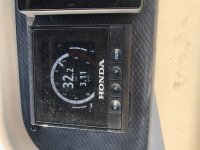SoFlaMk, man, oh man, it seems each owner has different experiences. In my case I end up replacing the O2 sensors on my twins each season. I found another post where another guy experiences the same thing:
www.marineengine.com/boat-forum/archive/index.php/t-446930.html post from metal-chicken at
06-30-2019, 12:04 PM
For two years running now, the O2 sensors have failed on both engines after not using in the low season plus the odd one here and there, same as metal-chicken, and in case you are wondering:
Engines are 2011, post SB 56. No, I don´t have water in my fuel. Yes, I get off the plane gradually. Yes, engine exhausts are above 6" from the water. No, I don´t pour water down the exhaust or wash down the engine casing without care or with a hot engine to avoid steam in the exhausts. Yes, I run the engines each two weeks in low season to normal operating temperature. No, I don´t conserve and spray oil into the intakes at the end of high season. No, it is not wiring. Yes, I reset the ECU after replacements. Yes, failures confirmed with fault code and Dr. H. Yes they really are failing and it´s nothing else, with rough idles kicking in before the alarm, O2 fault code, O2 in Dr. H. and high fuel consumption in my optimum cruising range which is between 3400 and 3600 RPM which goes from 22 litres/hr per engine (my normal) to 26 litres/hr which is not normal with my layout.
Sorry for the tone, but I am fed up with this issue. I replace the sensors, engines run great, everything goes back to normal and I am normally good for another season. I´m even wondering if heavy rains and wind can accumulate water in the exhaust with the engines up. Original Honda O2´s give me the same result as Walkers, so I buy Walkers. Just poor engine design somewhere, but not able to identify why it affects some operators while others are not.
I tore down one of the broken ones last week, carefully cutting into it, looking for traces of salt, water marks, etc, but no findings...


